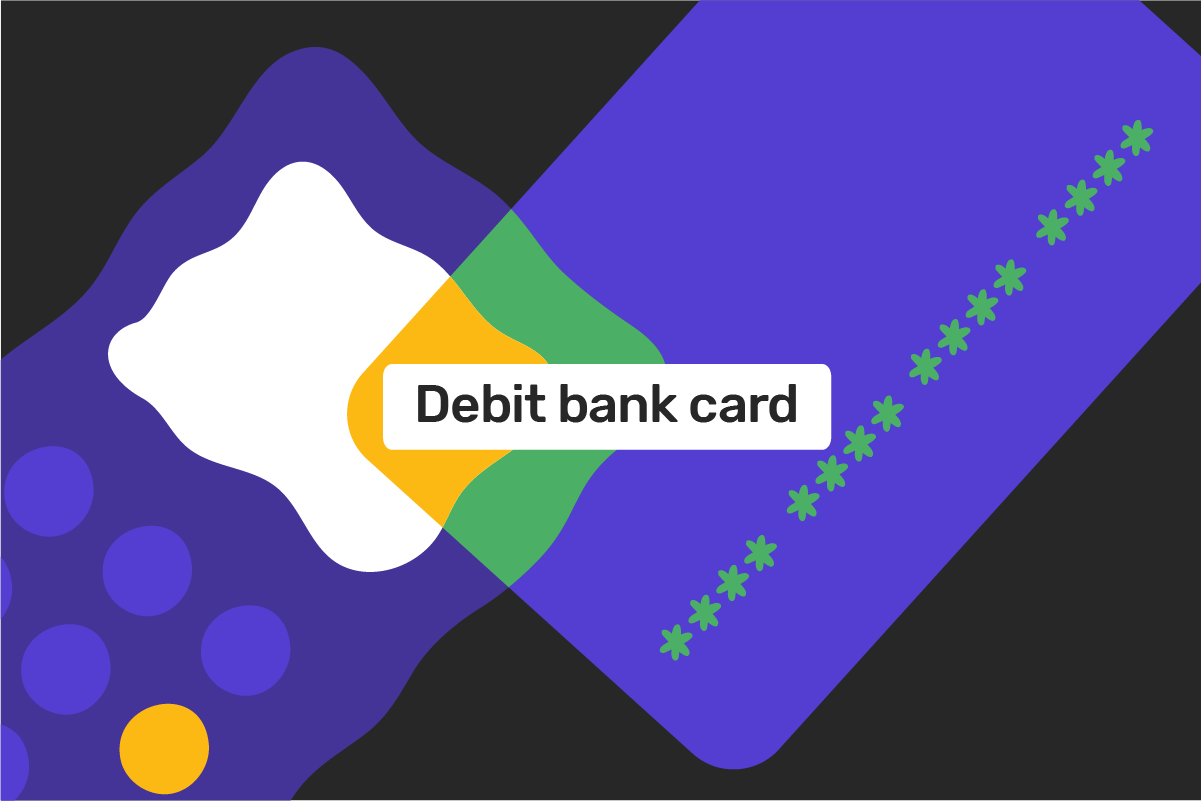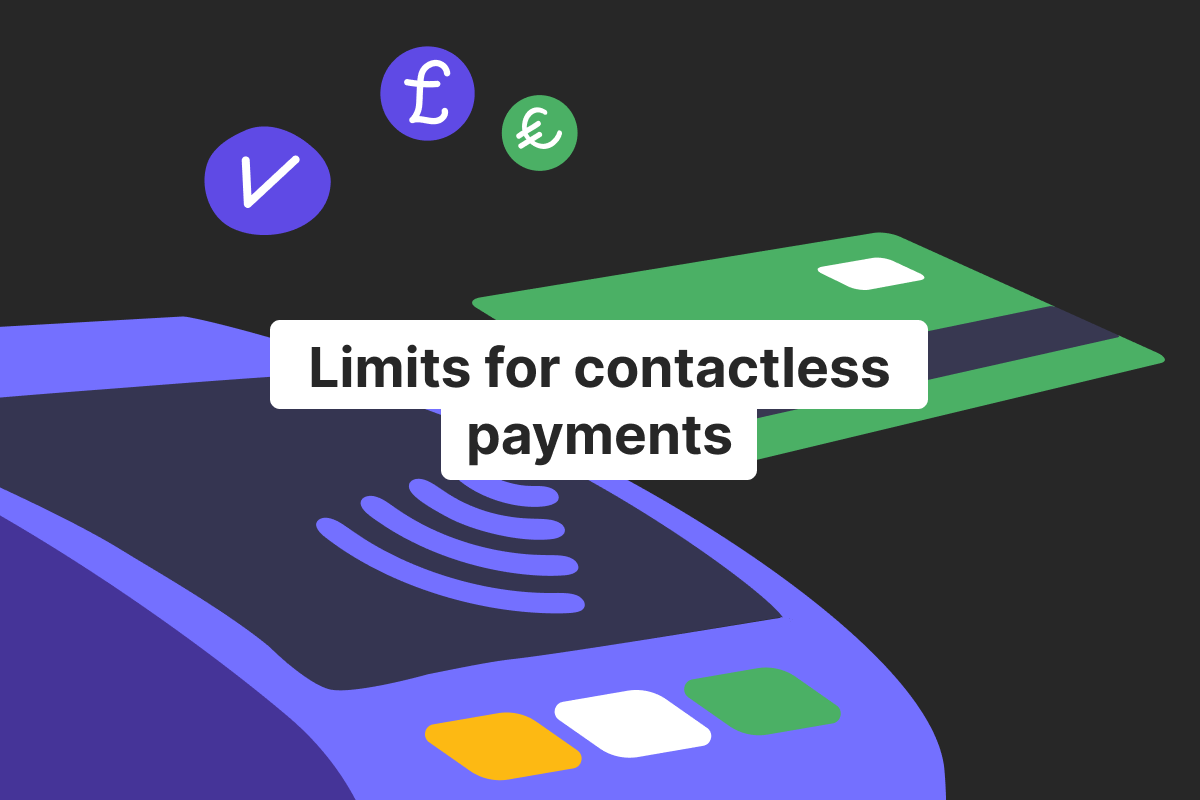Bank cards are evolving just like banking technologies and services. Card issuers and financial providers offer even more features every year, especially when it comes to cards. You can choose between virtual and physical bank cards, metal and plastic ones, and even order your own print or pattern. Customizing your card is cool, but, firstly we pay attention to the range of services offered and fees.
In this blog post, we’ll talk about the functions and meaning of debit and credit cards – two basic bank cards. In particular, Genome will focus on cracking up the debit card because sometimes it can be quite difficult to understand how this one works and what you need to use it.
Credit cards vs. debit cards: what’s the difference?
There are two main types of bank cards: credit and debit. With both of them, you can pay online and in physical shops, as well as make ATM withdrawals. The major difference between debit and credit cards is where the funds are taken from when you purchase something. Let’s have a look:
Debit card
Is linked to your current (checking) account. The money is charged directly from this account if you pay with your debit bank card. Such cards can often be issued as soon as you open a current account in a bank. In addition, the fees are not so high and you can even choose between different pricing plans for various service levels.
With Genome, you can order multi-currency debit cards for both personal and business accounts with us. Click here for a step-by-step guide on how to pre-order physical or virtual Genome cards.
Open an account
in Genome online
Credit card
This one is not linked to your bank account. Instead, when you pay with a credit bank card or withdraw funds from the ATM, you’re borrowing money from your card issuer. This process is also known as a cash advance and you will need to pay it off within a certain time. If you don’t do this, fees will be applied.
We’ve just discussed the crucial points of how debit cards are different compared to credit ones. Nevertheless, it all depends on the pricing plan of your financial provider and all the features it covers.
Most debit bank cards are free, but you can be charged for cash withdrawals in ATMs or international transactions, for example. At the same time, some banks offer priority 24/7 all year round service for those who go for the most expensive pricing plans.
With credit cards, you usually have a few months trial period during which the interest rate on your “loan” is zero. However, financial operations with these bank cards can be tricky sometimes with plenty of hidden fees. To be on the safe side and have the lowest charges, it’s better to go for a debit card. If you need advice on how to use the money on your credit bank card and not spend a fortune or fees, check our article on balance transfers.
Let’s now move on to the types of debit cards:
What’s the difference between regular debit cards and prepaid debit cards?
Apart from a regular debit bank card, you can also go for a prepaid debit card. For this one, you do not need to open a current bank account. Instead of being connected to your checking account, such cards are linked to an account held by a bank or credit union. To put it simply, you can only use as much money as you put on this prepaid debit bank card.
There are many ways to reload a prepaid debit card: cash deposits, depositing checks, online transfers, and even with the help of participating retailers. Such a card is a great option for those who do not want to open a current account but still prefer using bank cards rather than cash.
If you’re making any financial transaction with a regular debit card, your checking account is charged simultaneously. On the contrary, you cannot use a prepaid debit bank card without putting money on it first. Unlike a credit card, a cash advance will not work if you do not deposit beforehand.
What’s the difference between a debit and an ATM card?
The name of an ATM card says it all: you can only make ATM cash withdrawals with it. Such cards rarely have Visa or Mastercard logos on them. Remember that you cannot use ATM cards for any payments (no matter if these are online transactions or the ones in physical stores with POS). Such transactions will simply not go through or will be canceled.
Pros of using debit cards
Debit bank cards are the most common ones and are used widely. Unsurprisingly, they have plenty of benefits:
No fees for ATM withdrawals in ATMs provided by the same bank;
Higher security compared to using cash – nobody can use your card in the ATM without knowing the PIN. You can also set up cash withdrawal and payment limits so that you don’t lose much money in case your bank card gets stolen or lost;
Interest and fee-free;
No debt because you cannot borrow money from the bank by using a debit card. Indeed – you can only use the funds that are already in your current account;
Almost everyone can receive a debit bank card as it requires a minimum credit score. In the majority of cases, once you open a checking account you can order a debit bank card.
Cons of using debit cards
At the same time, these cards have some drawbacks that you should keep in mind:
Debit bank cards do not impact your credit score. If you want to improve your credit history, it’s better to use a credit card;
Better for small purchases rather than for large bills that you’re willing to pay over some time. With credit bank cards, for instance, you can use a big amount of money and pay off the sum with interests during an extended time;
If you do not keep track of the sum available on your current account, you can quickly go overdraft. It can happen you use a debit card often because they are linked. Consequently, your financial provider can apply fees for using extra money;
Low fraud protection: if someone steals your debit card details (no matter if it’s online payment, POS transaction, or ATM withdrawal), they can easily make financial operations even without actually having your card. If you have funds on your checking account and do not receive notifications about transactions, you can lose large amounts of money before you notice that your account is being charged.
Debit card security
Now, let’s talk about the safety of your funds and bank card details. As we’ve just mentioned, debit cards are reliable and secure for your daily banking. Here’s the shortlist on how to make your financial experience with these bank cards even safer:
Check your balance regularly
No matter if you’re using an ATM to withdraw cash or a mobile app to make a money transfer, don’t forget to take a glimpse at your account balance. Your debit bank card is one of the few ways to change your current account balance except for such payments as transfers, direct debits, and standing orders. If you’re tracking the sum of your savings regularly, you will notice any fraudulent transactions with this bank card in no time. Then, you have more chances to prevent any damage.
Be careful with online payments
Don’t save your debit card details online and mind the websites on which you’re paying with it. If fraudsters get access to your card information, your checking bank account can be charged immediately and you may not return the money.
Tip: look for a security symbol (padlock or unbroken key) on the website for additional safety. It means that your data, including card information, will be encrypted.
Use protected networks
If you make any financial transactions (including the ones that require filling in your debit card details) out of your house (both from a mobile banking app and computer), choose protected wireless networks with a password. In such a way you also decrease the chances of somebody stealing your card data.
Go for your bank’s ATMs
Apart from lower fees for withdrawing cash and all the other financial operations, you will be more protected. If you use reliable ATMs, your card details are less likely to be stolen or the very card to be damaged by fraudsters’ devices. Avoid ATMs at gas stations or any places without surveillance cameras.
Change your PIN
Don’t provide your card details to anybody, including the PIN. It’s recommended to change it every few months.
Take care of your mobile banking app
Use passwords and fingerprint/face recognition both for the application and screen lock. Don’t leave your smartphone unlocked anywhere because not only your card details can be stolen, but also your personal and bank account information.
FAQ:
How does a debit card work?
It’s a bank card that is linked directly to your current account. You can make online payments, withdraw cash from an ATM, or use it in physical stores – and the funds will be withdrawn from your checking bank account. Thus, you’re limited by the sum that you have in the account when making any financial operations. Remember that it’s also possible to go overdraft with some banks if you spend more money that is available in your current account.
How to get a debit card?
This process differs with every financial provider. In most cases, you can order a debit card after you open a checking account. Ordering a card is not a must, you only should do this if you really need it.
If you do not want or do not need a current account, you can apply for a prepaid debit card. Such a card is a part of an account owned by a bank that issues a card. As a result, this account is charged when you purchase something with a prepaid debit card.
You can also get virtual or physical debit cards with Genome by opening a personal or business account. Fill in your information here and wait for a few days for your account to be activated. Voila, no need to go to the bank’s branch, send over documents, and sign them. Just within a few days you’re all set and can pre-order your multi-currency debit cards.
Open an account
in Genome online
How old do you have to be to have a debit card?
The first requirement for having a debit card is opening a current bank account. Most financial providers offer such services to anyone older than 18. If you’re between 11-17 years old, you can apply for a teen checking account with the help of your parents.
How to use a debit card?
You can make online and in-store transactions, ATM cash withdrawals, contactless payments, and also add them to digital wallets (ApplePay/GooglePay). You can do all these with both physical and virtual debit bank cards. Some people prefer having physical cards just in case. But most of those living in big cities choose virtual bank cards and use them with the help of their mobile applications.
Where is the security code on a debit card?
This number is also referred to as a card verification value (CVV) or a card verification code (CVC). It’s a three or four-digit code below the magnetic stripe on the backside of your debit card.
Where is the sort code on a debit card?
It’s a six-digit number right under your name on the front side of the card.
What is the issue number on a debit card?
Not all debit cards have issue numbers. This code is mostly for cards issued in the United Kingdom. If your card has one, it can be found at the bottom of the card on the front.






